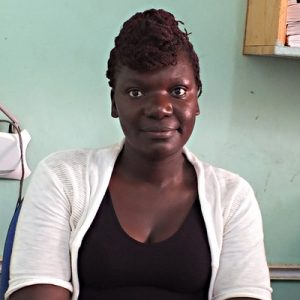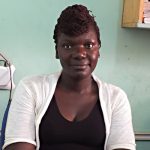The distance from Kakamega Town to Munungo Community is very long. It took us two hours and 45 minutes to get to the community location. The ride at the beginning of the journey was enjoyable since the road is tarmacked. But after a while, we took a turn onto a mud road where it was dusty and bumpy.
The Munungo Community area is a peaceful and slightly vegetated rural area. The buildings in this area are mostly mud block walls and iron sheet roofing.
The average family consists of ten people. You can find extended family members living with the nuclear family on many occasions. Most people here are peasant farmers. They grow sugarcane as a cash crop.
In this community, it is the responsibility of the mother to take care of the children and the house while it is the responsibility of the father to earn money and feed the family. They also keep farm animals and sometimes engage in brick making.
Water
Most people travel a mile or more to reach the unprotected water source. Since the nearby drilled well is broken, the people of this community are stranded.
Every day, girls and women have to wake up very early to ensure that they have looked for water before they can do anything. We are currently in the dry season and the hand-dug well is too shallow and about to dry up.
The water quantity in the current well is not enough for the whole community. There is a school nearby which also depends on the same water point.
"Water is a very scarce commodity in this community," Mrs. Emily Wanyama, a retired smallscale businesswoman, said.
"The lack of water has caused life to be very difficult for an old woman like me. I am so old and sickly and I don't have the strength to walk around looking for water."
The known negative consequences are many, though I will mention a few. To begin with, it is waste of time for both mothers and daughters since it sometimes takes the whole day to fetch water. Poor performance is common for girls in schools since they miss school regularly to look for water.
Poverty in the community remains because women are not involved in any income generating activity due to the time spent fetching water. And then there is the outbreak of waterborne diseases in this community because they consume contaminated and untreated water. Finally, women and girls risk attacks when they walk late in the evening to fetch the water.
Sanitation
All homes in the community have latrines. The sanitation conditions of the latrines we observed were very poor. They were dirty because there is no water to wash them.
"People here in this community are enlightened when it comes to hygienic issues because of education," Levy Barasa, a local farmer, said.
"The challenge in this community is that we have no water to enable us to practice hygienic measures. Because of water problems, hygiene has deteriorated."
This community is doing well when it comes to hanging their clothes on the clothesline for drying after washing. They are also using the dish rack to put their utensils to dry after cleaning them.
The biggest areas that need improvement are handling drinking water and storage of drinking water, hand washing, and general hygienic measures such as cleaning the animal waste all over the compound.
Here’s what we’re going to do about it:
Training
Community members will attend hygiene and sanitation training for at least two days. This training will ensure participants have the knowledge they need about healthy practices and their importance. The facilitator plans to use PHAST (Participatory Hygiene and Sanitation Transformation), CLTS (Community-Led Total Sanitation), ABCD (Asset-Based Community Development), group discussions, handouts, and demonstrations at the spring. One of the most important topics we plan to cover is the handling, storage, and treatment of water. Having a clean water source will be extremely helpful, but it is useless if water gets contaminated by the time it’s consumed. Handwashing will also be a big topic.
Training will also result in the formation of a committee that will oversee operations and maintenance at the well.
Well Rehabilitation
Once we’ve cleaned out the well, we’ll construct a protective well pad and install a new stainless steel AfriDev pump.
This project is a part of our shared program with Safe Water and Sustainable Hygiene Initiative (SAWASHI). Our team is pleased to provide the reports for this project (edited for readability) thanks to the hard work of our friends in Kenya.

 Borehole Well and Hand Pump
Borehole Well and Hand Pump






































